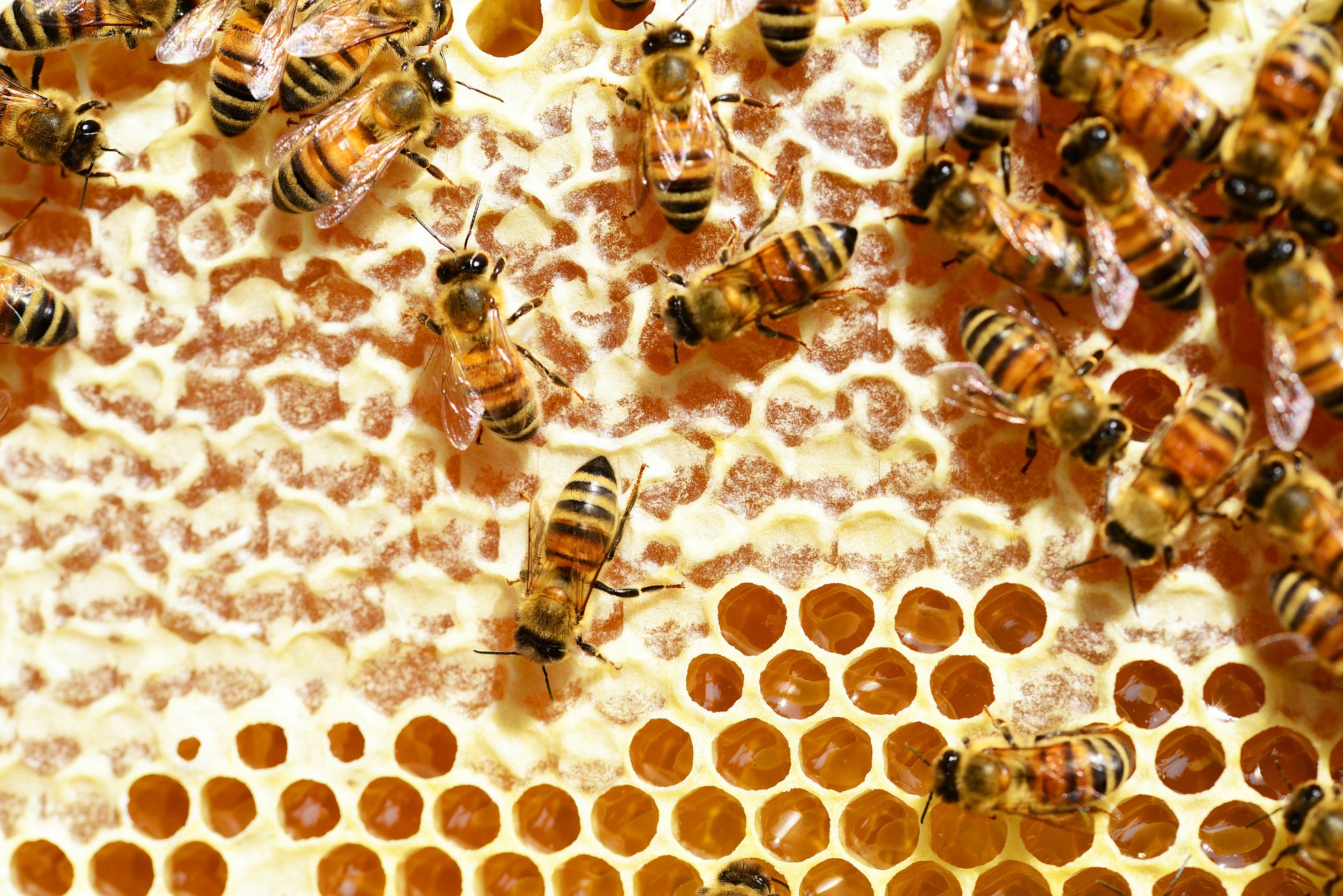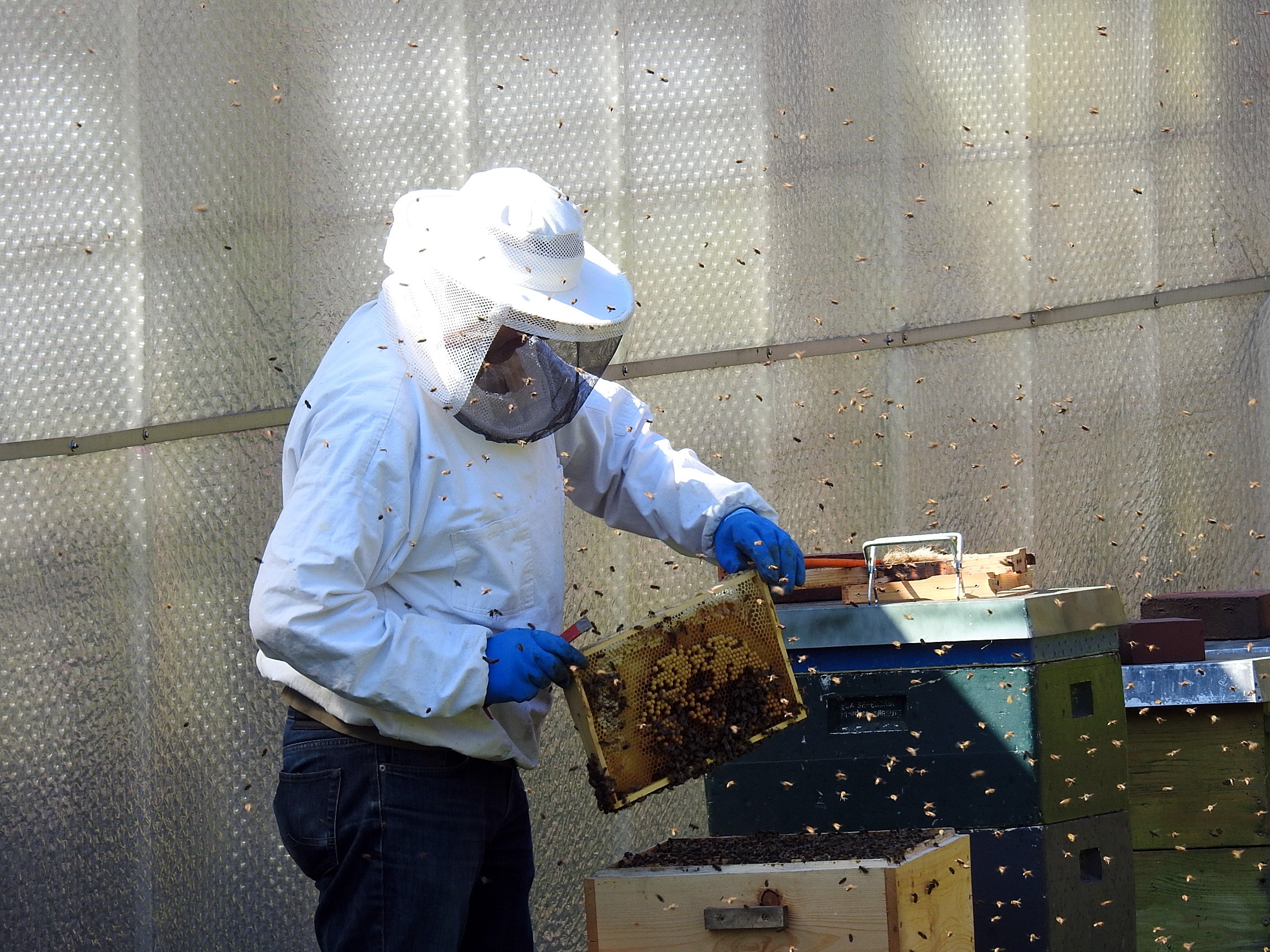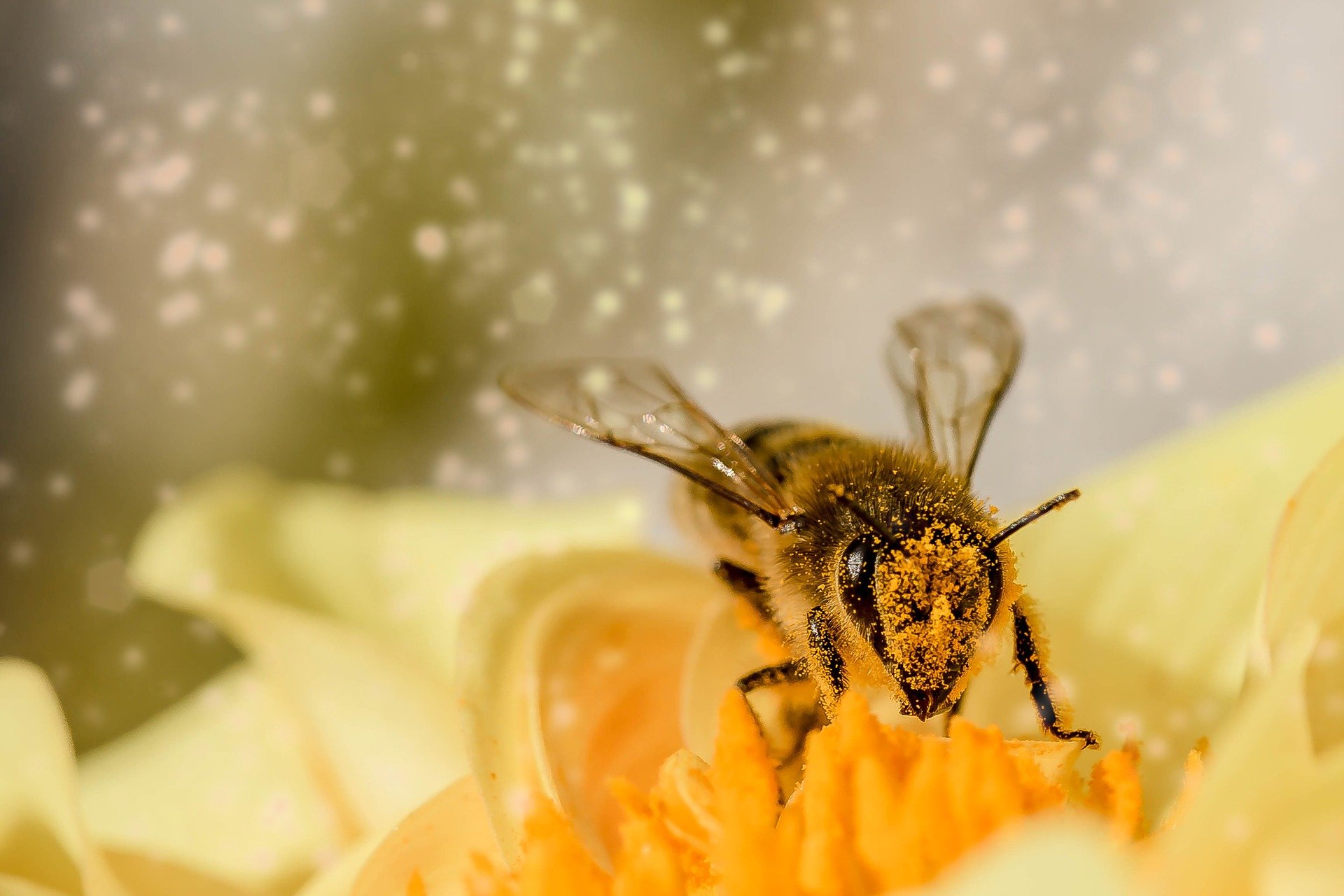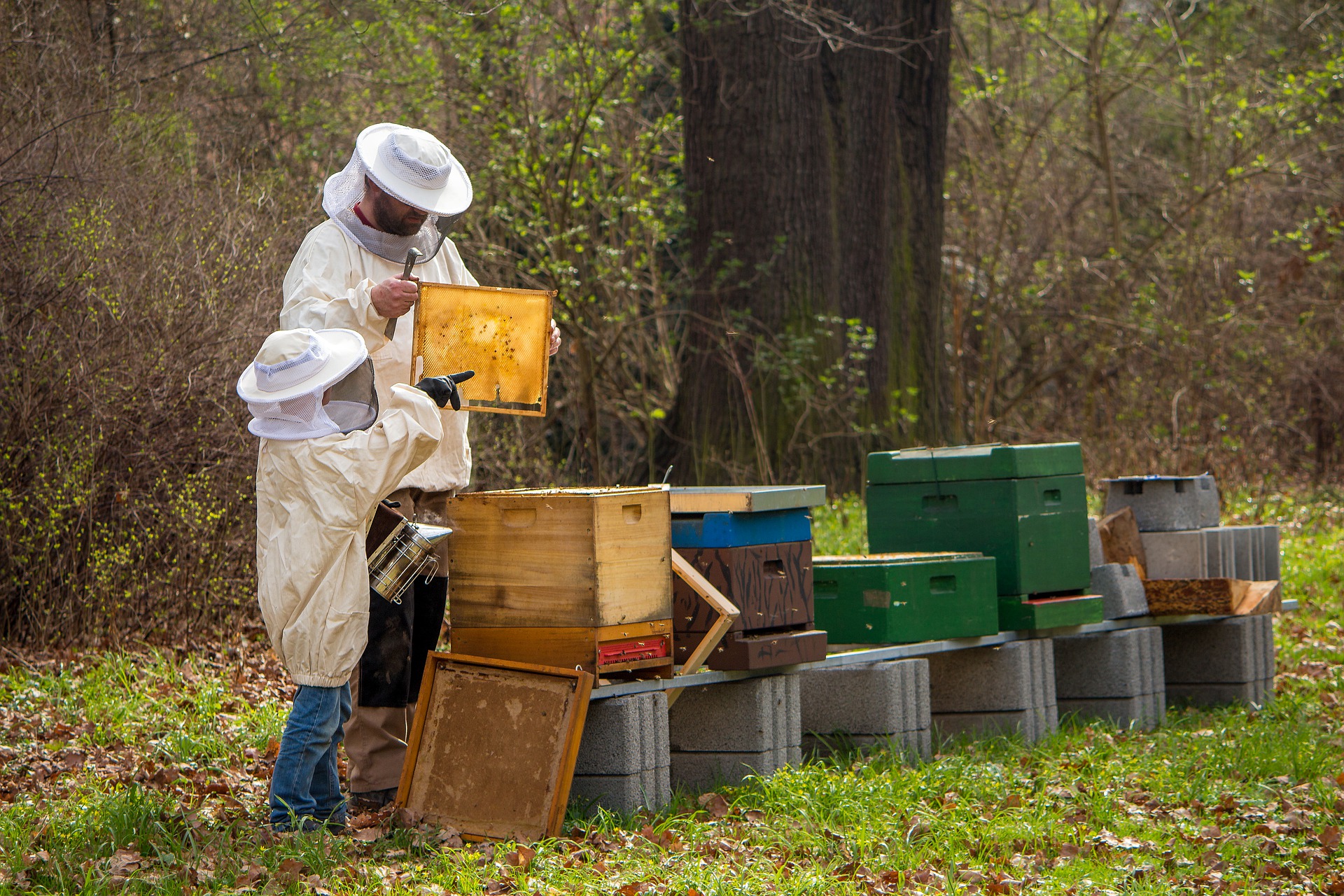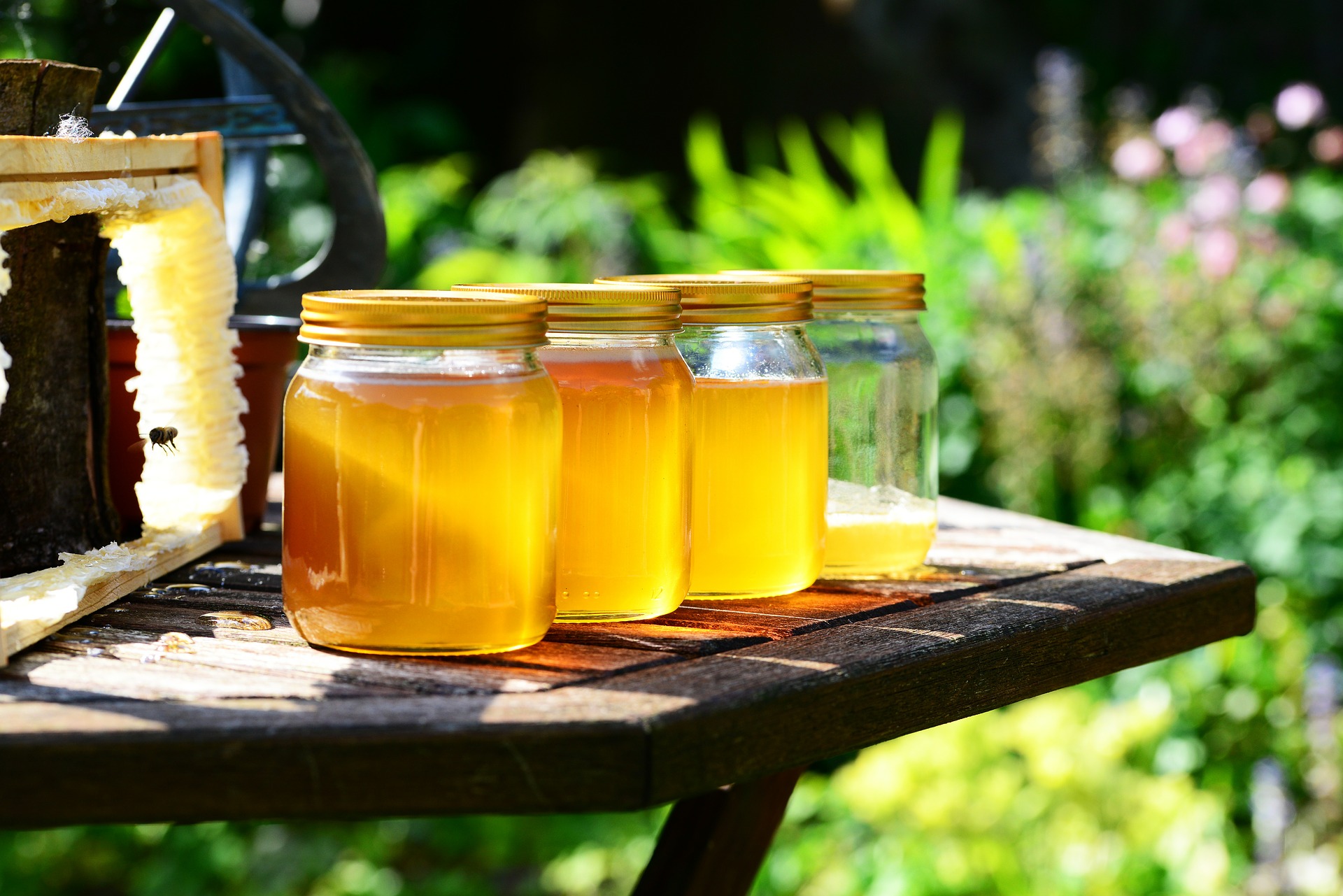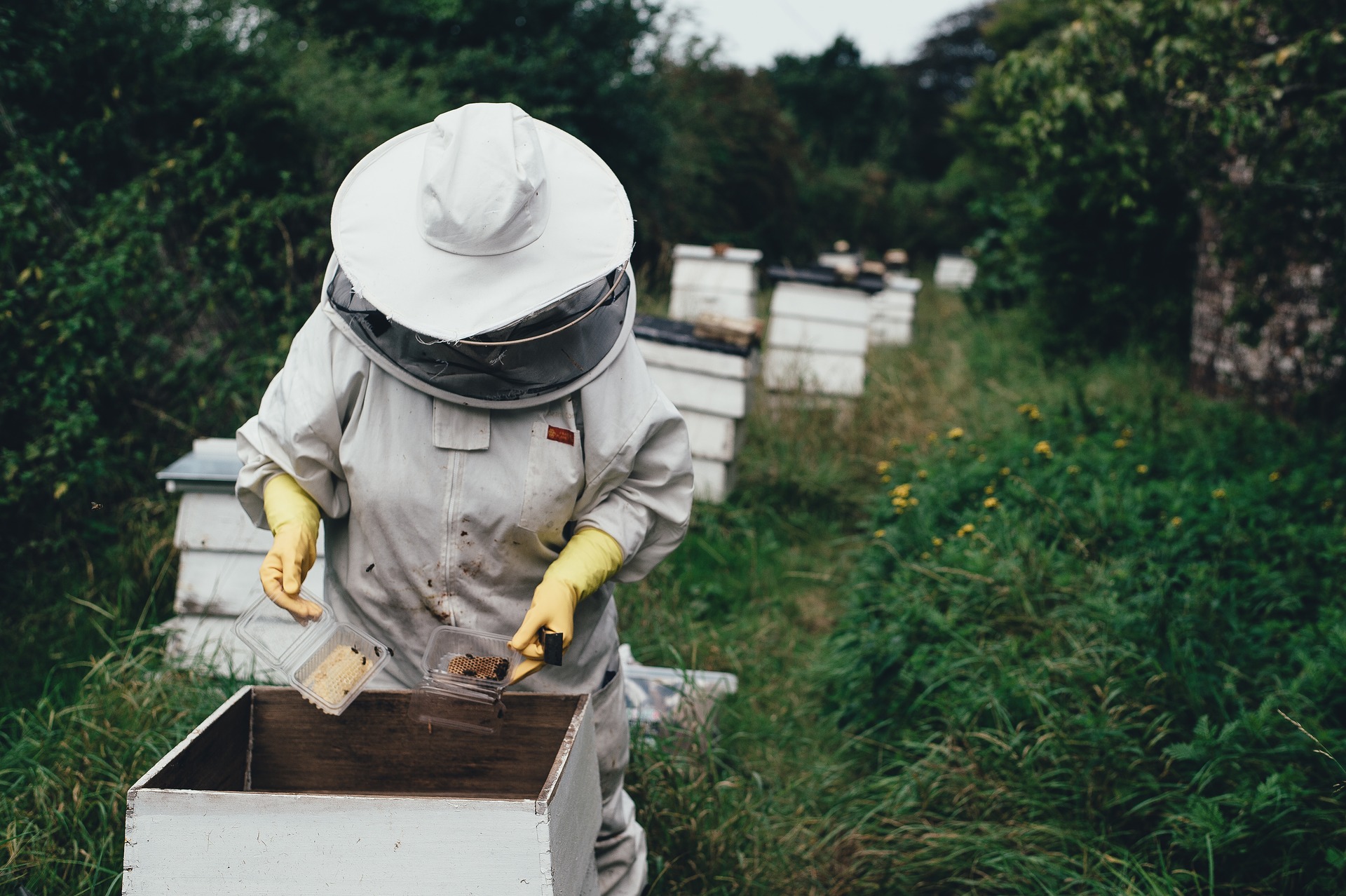Why beekeeping? Beekeeping is a wonderful and very rewarding experience
There are so many reasons to become a beekeeper:
- Honey, honey, honey!
- Beekeeping is Relaxing and Rewarding
- Beekeeping Offers a Connection to Nature
- Bees Are Great for Your Garden
- Helps farmers
- Bee Populations Are Declining
- Beekeeping Knowledge is Disappearing
- You Love Honey and Beeswax
- Pollination for the flowers, trees, and gardens
Perhaps these facts will appeal to you. Perhaps they will encourage you to take up this wonderful hobby. Nevertheless, beekeeping is important – not just to the individual, but the world in general. We must always remember that bees are an integral part of nature; a part that the world cannot live without.
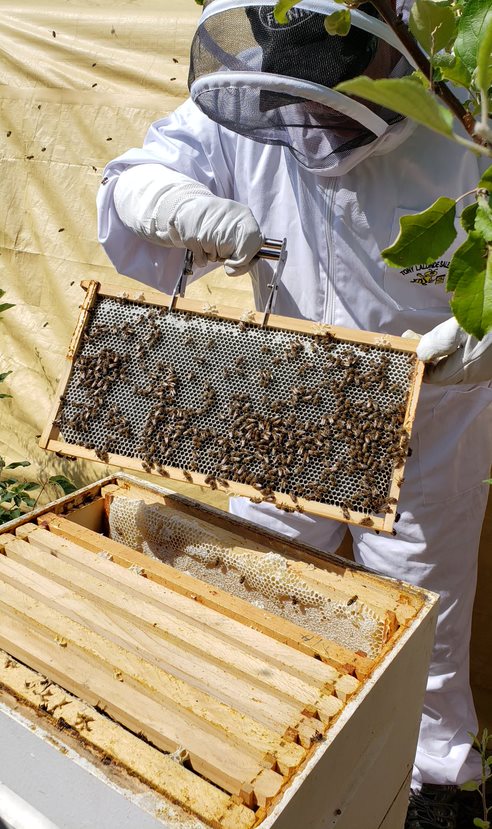
Getting Started With Beekeeping
Beekeeping is a fun filled hobby, which requires a willingness to learn from your experiences, and a commitment to learn new. Let’s get started
Perhaps these facts will appeal to you. Perhaps they will encourage you to take up this wonderful hobby. Nevertheless, beekeeping is important – not just to the individual, but the world in general. We must always remember that bees are an integral part of nature; a part that the world cannot live without.
RESEARCH
First, do your homework. Get a good understanding on the basic requirements and overview of what you need to do to get started. You can do this by finding good resource websites on the internet, watch tutorials on You Tube, read a few good beekeeping books, take a beekeeping course or even a webinar.
GET A GOOD BOOK
Getting a good resource books will provide you the foundation you need to get started. The best we found is Beekeeping in Western Canada (1998).
FIND LIKE MINDED - NETWORK
Bee sociable. Join a Facebook group or two. Here’s some local associations that you can join:
TAKE A WORKSHOP OR TWO
When we first started out, we took a one-day introduction to being a beekeeper offered through a horticultural club. They provided the basic oversite of what is needed and visited an actual apiary on a hay drawn cart by a tractor.
CHOOSE YOUR MENTORS
From new bee friends network, seek a mentor. We had a friend of a friend who we knew who kept bees in their back yard. We mentioned of our interest to acquire some backyard bees and offered to help to get some hands-on experience. (Note: Try not to set yourself on fire with the smoker.) This lead us down the path to getting some experience. We invited our mentor to come over to check out how we set up things and they helped us with us for our first inspection over a good pint of beer. From there, we were on our way!
START SMALL, BUT NOT TOO SMALL
Even if you plan to scale up or if you have had little or no experience, it’s a good idea to start with two hives. This will give you an idea of what it takes, how your location works out, and whether you like it or not. With two or more hives, you have a comparison and allows for equalizing winter stores and population for successful over-wintering.
CONSIDER YOUR EQUIPMENT
There are a lot more options in equipment than you might think, especially in hive components. You’ll want to consider your physical capacity and the pros and cons of various options as it is a significant financial investment and you’ll be living with your decisions for awhile. Most common hive bodies used are “standard” sized Langstroth equipment, but increasingly, beekeepers are working with medium-sized honey boxes. Don’t cheap out on your hive tools and smoker as you want them to last a while.
REVIEW LOCAL BY-LAWS AND REGISTER YOUR HIVES
In Saskatchewan, you must register your hives with the Government of Saskatchewan. For further information contact the provincial apiarist: https://www.saskatchewan.ca/government/directory?p=c9ba21c1-96e7-4e39-814e-cb73e13d377b . Registering your hives not only gives the Province important statistical data, but they will send you updates on recommended practices and you can request notification if there is any significant pesticide spraying in your area. It also connects you to the Provincial apiarist, or inspector, who are required to inspect your hives if you plan to sell to ensure disease free status and they are a fantastically supportive source of expert information and advice.
PROTECT YOURSELF
First, start thinking about your sting protection. Most experienced beekeepers do not use gloves, but you may want to start with them until you are comfortable with the bees. Make sure they fit you snugly; you don’t want to drop a frame of bees on your foot. For body coverage, climate and comfort with stings will determine your choices. It is helpful to have a couple of options on hand, perhaps a veil for light beekeeping (e.g. external inspections, feeding, etc.) and a suit or at least a jacket, for full inspections. If you can afford it, look for the thick mesh suits, you will not get stung, and they are cooler than the cotton ones. But they can be pricey. Rubber boots are good as well, things can get mucky in the back yard helps protect your feet from getting stung.
CONTINUING EDUCATION
Courses, seminars, blogs, Facebook groups, You Tube tutorials, books, magazines, discussions with other beekeepers, and webinars are all critical in building expertise and confidence. But at the end of the day, paying attention to what is going on in your hives is an equally important way to learn. Spend time in the bee yard. Take your time when doing inspections, make comparisons, watch for changes. Be ‘one’ with the bees. Enjoy 😊
CREATE A BEEKEEPING JOURNAL
Document what you are seeing and doing in a journal, which helps to keep track what’s in bloom, weather, actions taken, learning, mistakes, treatments, conclusion of inspections, feeding schedules, questions, etc. Keeping a journal helps to provide a framework for what to look for during inspections, when to conduct them, when to pull supers off for extraction, when to re-queen a hive, when to feed, and when to treat a hive for preventative measures. Don’t forget to write it down.
ENJOY AND RELAX
Finally, give yourself a break. You will make mistakes. You will do some dumb things - you may not believe how many dumb things one person can do - but that’s the way we learn (e.g. do not drop a full frame of bees on your foot). Beekeeping is one of the most enjoyable and interesting endeavours you will ever encounter, but even seasoned beekeepers will tell you that it’s forever a work-in-progress. Do your best, keep learning, keep going, and have fun. 😊
Get upto speed With the basics
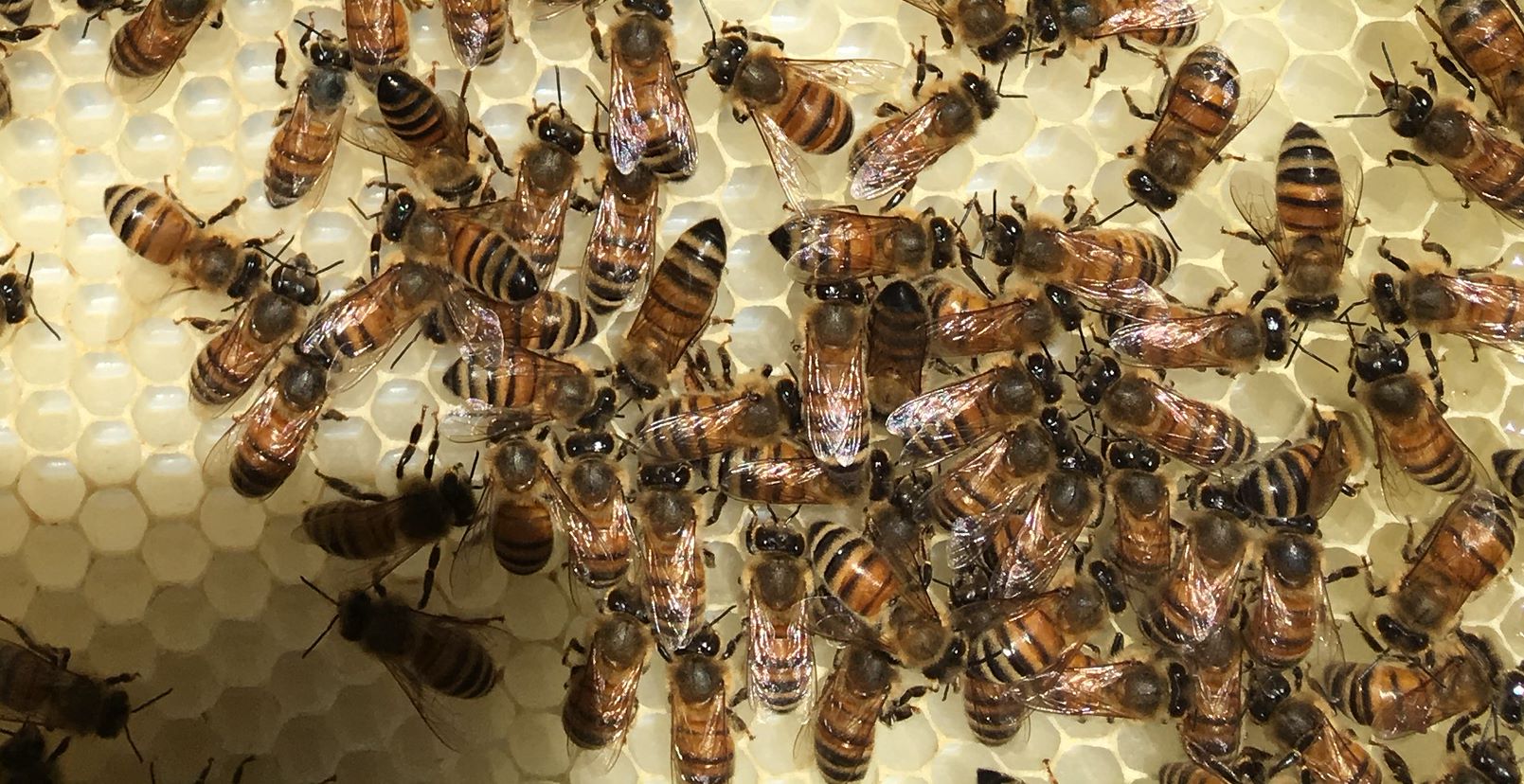
Planning and Hive Placement
Location is everything. This is should be considered prior to installing your bees in their permanent home. Season changes, climate, sunlight, and the elements are all things that can affect the bees and your ability to care for them. It is also much more difficult to move your hives to a different location during the middle of their foraging season. Here are some helpful tips to determine the location: Sun or Shade: Depending on where you live, the hive should be placed in early morning sun. This gets the bees out of their hive earlier in the day to forage. In the Northeast, hives can remain in the full sun for the entire season. However, in places with warmer climates, hives should receive some afternoon shade. Wind Protection: Hives should be placed in an area with a wind break, such as a fence, shed, shrubbery, trees, or bushes. This is especially true in climates where temperatures drop below freezing. Northern facing sides of the hive should especially be protected in the winter in Canada. Ideally, having the hive entrances face either east or south, especially in Western Canada. Ease of Access: You should be able to see the hives and access them easily too. This helps you to provide the inspections and care that the hives requires. Water Source: A water source should be nearby. This can be a birdbath or even a small water pot filled with pebbles for landing and water. Space Between: Make sure you put proper space between the hives in order to work them. You should be able to comfortably walk between and around them. Perfect Height: You will need to elevate your hives on cinder blocks or a platform to help keep ground moisture out and allow you work the hive without harm to your back. Elevated hives make for easier lifting. However, do not make the platform too high. You do not want the honey supers difficult to access during the foraging season. Direction of the Entrance: The hive entrances should face in the opposite direction of human foot traffic. The bees won’t mind, and this helps to prevent the bees perceiving people and pets that walk-in front of the hive entrances as potential threats. Predator Consideration: Keep you r eyes open for any critters like skunks or bear. Determine if you have predators in the area. Electric or strong fencing may be required to ensure the safety of your hives.
The Hive
Modern honeybee colonies are designed to mimic the dimensions and environment of a bees nest built naturally by wild honeybees, except with the ability to remove individual frames of honeycomb for inspection and manipulation. The space between each frame, known as the "bee space", is approximately 8 mm. This space is sufficient for the bees to move around, but not big enough so that the bees will build additional honeycomb in the space. This facilitates easy removal of the frames for inspection or extraction.
The most common hive used is the Langstroth beehive, which consists of:
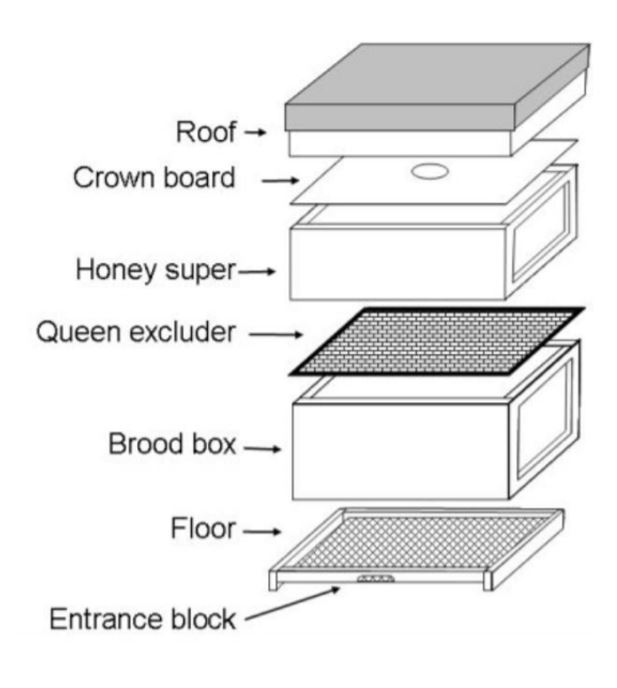
The Basic Tools
The basic tools used by a beekeeper to manipulate include the following: Smoker: The smoker is used to calm the bees while the beekeeper inspects, or works around the hive. It's believed the smoke sends a signal to the bees to consume as much honey as possible in case the fire forces them to abandon the hive. While they are busy eating, the beekeeper can work around them. The smoker has a fire chamber that the beekeeper fills with flammable material (such as wood shavings or dried grass) and lights so that it smolders. Squeezing the smoker's bellows sends a puff of smoke into the hives. Hive Tool: The hive tool is used to open the hive, loosen hive parts, lift frames, and scrape up propolis and excess wax. It can even remove the venom sac from the skin following a bee sting. Beekeepers never visit a hive without this tool. Bee Brush: This brush is used to gently remove bees from the frames when collecting honey. Beekeepers are always careful not to hurt bees when removing them. Bee Suite/Veil: Most beekeepers wear special clothing to protect themselves from bee stings while they work. They should always wear a hat and veil to avoid stings around the face and eyes, but they can also wear special pants, plus a jacket and gloves. During honey removal, in unfavourable weather, and late season, it's most important to be well protected, since bees may be more defensive or aggressive. The suit is usually white, since lighter colours are more calming to bees. Beekeeping Gloves: Beekeeper gloves, usually made of leather or canvas, are very thin and pliable to allow the beekeeper more dexterity in working with bees and to reduce the likelihood of accidentally harming them. Frame rest: This tool is a simple, yet handy device that allows beekeepers to hang frames on the side of the hive while working. This means there is more room to manoeuvre frames while inspecting the hive, without crushing bees.
Basic Colony Examination
Beekeepers check their colonies approximately once every 10 days from spring until fall to ensure the colonies have good nutrition, strong health, and enough space. The best time to check the hive is on a warm sunny day with little wind to prevent chilling the brood and to take advantage of having most of the field bees away from the hive. The main things to consider when conducting an inspection are: Are there fresh eggs present? This signifies that a queen is present, even if she is not seen during the inspection. Is the brood pattern good? A spotty appearance to the brood pattern may indicate a poorly performing queen or disease issues. Does the colony have enough honey and pollen? If there is not enough food stores, and there is little external food present, the colony may need supplemental feeding. Are there any signs of disease? If so, appropriate disease treatment protocols may need to be initiated. Is there enough space? If the colony is strong and there is an abundant food source, a lack of space will cause the colony to swarm. Harvesting Honey While people raise bees for various reasons, most beekeepers aim to harvesting the surplus honey their bees produce. The honey harvest occurs in late July and August when nectar flows are at their best. Most hobbyist beekeepers use a manual or electric honey extractor. Beekeepers place harvested uncapped frames into the extractor and allow it to spin. Once a few minutes of spinning is completed, the honey is filtered from wax and debris through a series of sieves into a collecting pail. Once the honey is in the pail, it’s good to eat. What a rewarding feeling!!
Harvesting Honey
While people raise bees for various reasons, most beekeepers aim to harvesting the surplus honey their bees produce. The honey harvest occurs in late July and August when nectar flows are at their best. Most hobbyist beekeepers use a manual or electric honey extractor. Beekeepers place harvested uncapped frames into the extractor and allow it to spin. Once a few minutes of spinning is completed, the honey is filtered from wax and debris through a series of sieves into a collecting pail. Once the honey is in the pail, it’s good to eat. What a rewarding feeling!!
Hive Products - Enjoying the Spoils
It's common knowledge that most bees make honey, but did you know that they also provide us with wax, pollen, royal jelly, propolis and venom. These by-products have different uses but are all considered beneficial to our health. Most common products include: Honey: Honey is a sticky substance that bees make by gathering nectar from plants and processing it in their stomachs. They keep the honey in cells, adding an enzyme to ripen it. It's stored as a food reserve for the colony in winter, but since they make more than they need, beekeepers can collect the surplus. Honey is used to sweeten food and honey wine (mead); however, it does have medical properties as it is known to have antibacterial properties that can help prevent or heal infections. Wax: When they reach a certain age, bees naturally produce wax flakes in glands on the underside of the abdomen. They use the wax to build cells in which they raise their broods and store honey. Beekeepers can collect the wax. Beeswax is used to make candles, used in furniture polish and in cosmetics. It was traditionally used-in decorating Ukrainian Easter eggs, or pysanky. Propolis: Propolis is a sticky substance that bees collect from trees and other plants. They use it to seal cracks in the hive (it's often called "bee glue"). Propolis also has antimicrobial properties, which help keep the beehive sterile. It is to make a wood varnish, skin ointments and other health products. To collect it, beekeepers place a trap at the top of the hive. The trap is like a grid, with holes too small for the bees to pass through enticing them to fill them in with propolis. Pollen: Bees rely on pollen as a source of protein. They collect it from flowering plants. If you look closely at a bee, you may see pollen stuck to her hairs or bunched on her hind legs. Beekeepers use special traps to collect the pollen. It is usually marketed as a supplement that can boost the immune system and provide many other benefits. Royal Jelly: Royal jelly is a very nutritious substance worker bees produce through their glands and feed to the larvae and queen. In traditional Chinese culture, it is believed that eating royal jelly increases energy and prolongs youthfulness.
Record Keeping and Maintenance
Throughout the busy season, beekeepers maintain a record of what's going on. It's important to keep track of when signs of disease or pests appear, methods taken to control them and subsequent results. Beekeepers need to keep track of the dates and hives in which activities take place. When things slowdown in the apiary, beekeepers maintain and fix their hives and processing equipment in preparation for the next season. They also order supplies they might need, such as new hive boxes or jars for bottling honey.
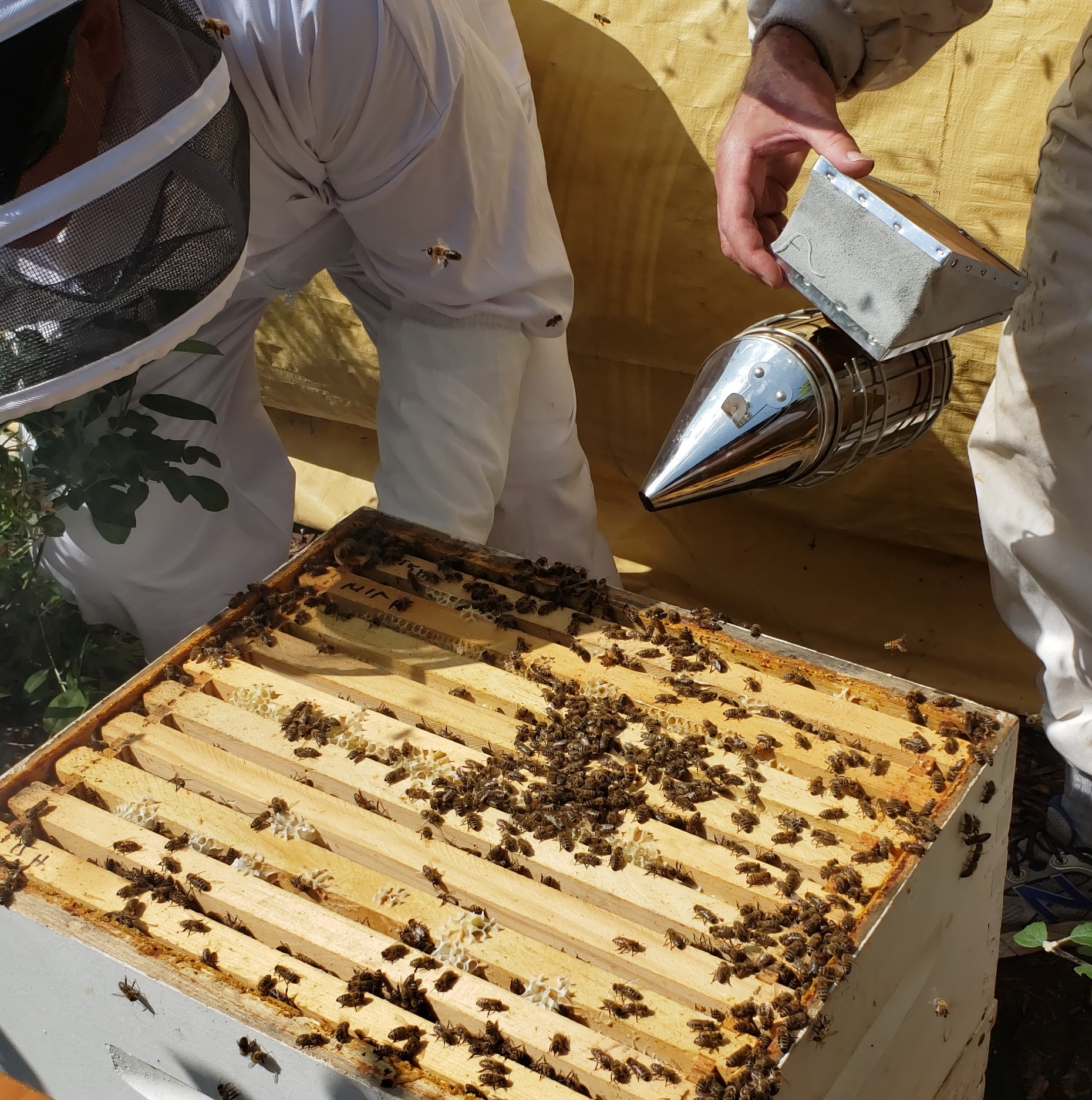
The Year of a beekeeper
Throughout the year, the beekeeper can be very busy or very slow depending on the time of year. This gives you an overview of what's going on for each month of the year for the beekeeper and the hive.
January/February
The bees are busy keeping the queen warm inside by forming a cluster of thousands of bees around her. There is little activity except on a warm day (about 7-10C) when the workers will take the opportunity to make cleansing flights. There are no drones in the hive and no worker brood. The bees will consume about a pound or two of honey per week. Honey consumption really picks up with the onset of brood rearing in February. The beekeeper is relaxing and enjoying the cold weather during this down time. This is a good time to catch up some research for new ideas to use in the upcoming year. Also, as there is little work required from you at the hives, make certain the entrance to the hive is cleared to allow for proper ventilation.
March
During this month, there is a risk of colonies dying of starvation. With the days growing longer, the queen steadily increases her rate of egg laying. More brood means more food consumed. The bees will continue to consume honey stores. Usually around mid-Mach, if the weather is above 5C, beekeepers can check on food supplies by seeing how heavy the hive is. If it feels light, the beekeeper may need to feed the hive until the appearance of the bee’s natural food supply. If you are going to do a spring Varroa mite treatment, you may either start in late March or early April. The beekeeper also starts considering their plans for the upcoming year – will we expand the or create queens.
April
As the weather improves, maple, willow trees are starting to blossom. The bees begin to bring pollen into the hive. The queen is busily laying eggs, and the population is growing fast. Beekeepers start to treat the hives with a ‘hard’ miticide and the antibiotics for American foul brood. Consider unwrapping the hives, moving the miticide, and re-wrapping the hives, especially after 3-4 weeks from initial installation. This will allow you to ‘chase’ the brood through the hives and give you a better mite-kill.
May
With spring slowly coming into full swing, the bees out gathering nectar and pollen more frequently as the flows are starting. The queen will be reaching her greatest rate of egg laying. The hive should be bursting with activity. Now the busy season starts for the beekeeper. Mite treatments should be completed and removed by mid-month. No honey supers should be added until two weeks after treatment removal, and only when bees cover 7 of the 10 frames of the brood chamber. Add a queen excluder (if wanted), and place honey supers on top of the brood chamber. Watch out for swarming (9 days is the time it takes the bees to create and cap a Queen cell and decide to swarm). Conduct your initial inspection by mid-May once the winter warps have been removed, and the continue to inspect the hive weekly. Also, beekeeper may decide to expand the colonies by creating nucs or rear queens.
June
The queen's rate of egg laying should remain steady this month. The main honey flow should happen this month. The beekeeper inspects the hive weekly to make certain the hive is healthy, and the queen is present. Add honey supers as needed. Manage for swarm prevention via equalizing hives, making splits/ nucs. Watch for swarm queen cells. Consider re-queening hives that are slow to build, or boost with a frame or two of brood from a strong hive. Once this hive is up to strength, add your honey supers. If you have a queen in her 3rd year, then create a nuc with her. In mid-June it will not reduce the number of bees available in the queen-less colony for the July nectar flow. Having a nuc means that if things go wrong, you still have the old queen, if the old colony has a problem raising a new queen. Also – now is a good time to re-queen if necessary (e.g., aggressive bees).
July/ August
This is the peak months for honey production. Nectar flow tapers off from mid-July to mid-August. Usually in August we get rain which stimulates a fall (September) nectar flow. On hot and humid nights, you may see a huge curtain of bees cooling themselves on the exterior of the hive (bearding). The beekeeper continues inspections to assure the health of your colony. Add a honey supers if needed, between the almost-filled summer honey supers and the brood chamber (called `bottom supering`). Using this method, the bees are not walking all over the comb/honey to get to the empty super. Harvest summer honey at the end of July or when the honey flow slows. Colonies with excessive brood and large adult bee populations should be left with a super full of honey at harvest time.
September
The drones may begin to disappear this month. The hive population is dropping. The queen's egg laying is dramatically reduced. The beekeeper harvests the last honey in the first week of the month. They also apply mite treatment after honey removal. Start feeding heavy (2:1) syrup the last week so the hives can accumulate winter feed (about 60 lbs is required to survive the winter).
October
The bees have still lots of bee activity on warm days, and you will still be feeding if required. After a hard frost and nectar flow is eliminated, they will start driving out the drones. The beekeeper watches the hives for robbing. Configure the hive for winter, with attention to ventilation and moisture control (needed both a lower entrance AND an upper entrance, both around 1” wide for ventilation). Install mouse guard at the entrance of the hive. Set up a wind break if necessary. Wrap the hives with 2 inch insulation for the winter. Finish feeding medicated syrup and doing the antibiotic treatment application by mid-October. Remove mite treatments in accordance with the label toward the end of the month.
November/December
The cold weather will send the bees into a cluster to keep the queen warm. Finally time to relax. Clean equipment prior to winter storage. Store and protect brood box, supers and comb from rodents and wax moth.
For more detailed calendars, refer to:
https://tonylalondesales.ca/hobbyists/january/
https://www.centralbeekeepers.com/beekeeping-calendar
